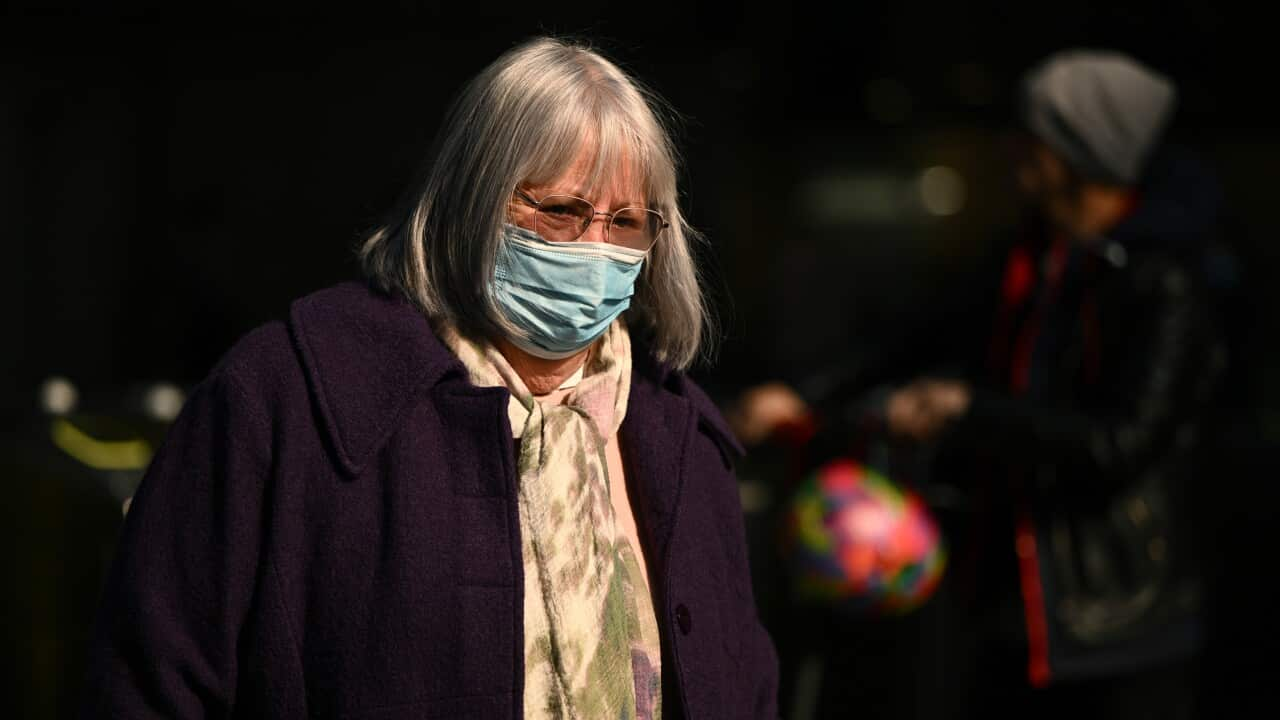Key Points
- BA.2.86 is a new 'variant under monitoring' of the virus that causes COVID-19.
- The World Health Organization says the virus has 36 mutations that distinguish it from Omicron.
- So far there's no evidence BA.2.86 spreads faster or causes more serious illness than previous versions.
The World Health Organization (WHO) and the US Centers for Disease Control and Prevention (CDC) are tracking a new, highly mutated lineage of the virus that causes COVID-19.
Six cases in four countries have been detected since late July of BA.2.86, which is considered a Variant under Monitoring because it has 36 mutations that distinguish it from the currently dominant XBB.1.5 variant.
"There's more than 30 amino acid changes to the spike protein, which is similar to what we saw with the emergence of Omicron," associate professor Paul Griffin, an infectious disease physician and clinical microbiologist told SBS News.
"At least at that very early stage, looking at how it's composed, that does give us some cause for concern, and certainly is one that we have to watch really carefully," he said.
So far there's no evidence that BA.2.86 spreads faster or causes more serious illness than previous versions. The CDC said its advice on protecting yourself from COVID-19 remains the same.
Last week, public health authorities documented one case each of BA.2.86 in the United States, the United Kingdom, and Israel, and three cases in Denmark.
The new variant has been given the nickname Pirola by scientists on social media. The name refers to an asteroid that orbits the Sun near Jupiter.
The Department of Health told SBS News that, as of 21 August 2023, no BA.2.86 sequences had been reported in Australia’s genomic sequence repository, AusTrakka.
"While the number of SARS-CoV-2 samples sequenced in Australia has declined over time, the Australian Government continues to monitor available data and the global COVID-19 epidemiological situation to ensure we remain vigilant in responding to these emerging variants," a department spokesperson said.
COVID-19 infections and hospitalisations have been rising in the US, Europe and Asia, with more cases in recent months attributed to the EG.5 "Eris" subvariant, a descendant of the Omicron lineage that originally emerged in November 2021.
According to the WHO, Eris is still a Variant of Interest - a level of classification below Variant under Monitoring.
XBB.1.16, nicknamed Arcturus, is still at this level of classification, as is XBB.1.5, nicknamed Kraken.
How dangerous are new variants?
Scientists are racing to learn more about the variant and Catherine Bennett, chair in epidemiology at Victoria's Deakin University says, "it’s a case of watching closely to monitor its spread, and also the severity of disease".
"At this stage, we don’t know how the proteins will affect how the virus behaves in the human population."
"If it proves that this variant behaves as other recent variants have, pushing up infections with its advantage in being able to escape immunity because it looks a bit different to our immune system, then it might compete with Eris (EG.5.1) as the next dominant variant in Australia."
"Given our past history with BA.2 which remained in circulation in Australia until early this year, some of us might have some cross protection."
Adrian Esterman, a professor of biostatistics and epidemiology at the University of South Australia, said that the fact the variant popped up simultaneously in several countries implies it has been circulating for some time without being discovered.
"The spike protein (the bit of the virus that latched on to human cells) has 36 mutations relative to XBB.1.5, making it very different to current circulating Omicron subvariants. This is important since the next vaccine will be based on XBB.1.5. The WHO has immediately declared it to be a Variant under Monitoring because of the large number of mutations,
"We know nothing yet about its pathogenicity (seriousness), but several of the mutations tell us that it is likely to be good at evading immunity, and hence have increased transmissibility.
Esterman said in his opinion the new variant is so distant from current Omicron subvariants that it should really be given its own Greek letter Pi, but "the WHO wouldn’t take this step until much more is known about it."
"The variant does have the potential to cause another worldwide pandemic wave, however, it could equally never take off and is unlikely to be as severe as previous ones."
What are the variants of COVID-19 still present in Australia?
Both Pirola and Eris are still types of Omicron, Griffin has pointed out.
"The way we've been naming variants has actually been really unhelpful, all of the main variants scientists are talking about now are actually still Omicron.
The WHO has a list of seven variants under monitoring and three variants of interest.

Variants of the virus causing COVID-19 and the date they were first discovered. Source: SBS News
Although there are numerous subvariants circulating in Australia at the moment, one of the dominant ones is XBC.1.6 and its descendants - a combination of Delta and Omicron, Esterman said.
"I think the message at the moment is to be aware that we are likely to see another wave in the coming weeks, and that vulnerable people should make sure that they are up to date with their booster shots."
The latest Department of Health data shows only one in five Australians have had a COVID-19 booster vaccine in the past six months.
- With additional reporting by Reuters











